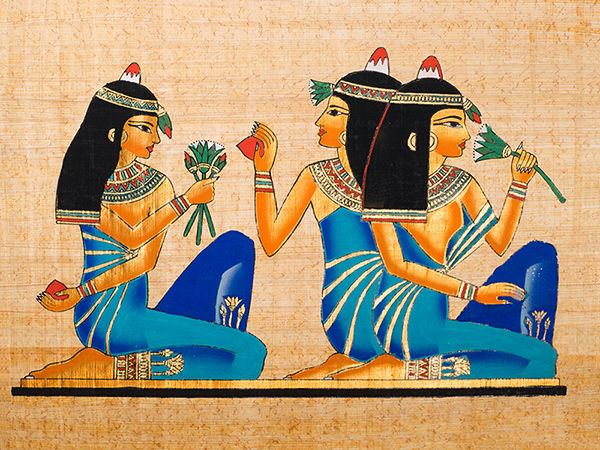The Origin of Lotus: History, Cultural Symbolism, and Spiritual Significance
- Herbs around us
- Aug 7
- 8 min read
Updated: Nov 7
Introduction to the Lotus Flower
A Unique Plant with Deep Roots in Mythology
The lotus flower is more than just a beautiful aquatic plant — it’s a timeless symbol etched into the fabric of ancient civilizations, religions, and cultural philosophies. Revered across continents and centuries, the lotus (especially the Nelumbo nucifera, also known as the sacred lotus) represents purity, rebirth, and transcendence. But where did this mystical bloom actually originate? How did it evolve from a botanical species to a universal spiritual symbol?
Understanding the origin of the lotus is like tracing the roots of human belief systems — from the fertile banks of the Nile River to the temples of India, the meaning of this flower runs deep. This article explores the natural beginnings, historical records, and sacred roles of the lotus, offering a comprehensive view of how one flower came to shape philosophy, art, and spirituality worldwide.
Why Lotus Fascinates Cultures Around the World
Few plants have captivated the human imagination like the lotus. Unlike other flowers, it blooms unsoiled in muddy waters, a powerful metaphor for rising above challenges. This remarkable characteristic, along with its graceful beauty and symmetrical petals, led civilizations to view it as a divine messenger between the earthly and the eternal.
Whether carved into stone in Angkor Wat or painted in a 15th-century Buddhist manuscript, the lotus has remained a cultural constant, symbolizing growth, enlightenment, and resilience. Let’s begin with its botanical roots.
Natural Origin of Lotus: Where It All Began

Botanical Classification and Species
Scientifically, the lotus belongs to the genus Nelumbo. There are two major species:
Nelumbo nucifera (Sacred Lotus): native to Asia, especially the Indian subcontinent, Southeast Asia, and parts of China.
Nelumbo lutea (American Yellow Lotus): native to North and Central America.
Unlike water lilies (from the Nymphaeaceae family), lotus flowers grow above the water, not floating on the surface. Their seed pods and root systems are also different, making lotus a completely distinct botanical species with an ancient evolutionary history.
Interesting fact: The oldest lotus seeds ever found were discovered in a dry lake bed in northeastern China. They were carbon-dated to be over 1,300 years old, and still capable of germination.
Native Regions of the Lotus Plant
The sacred lotus likely originated in the Indo-Gangetic Plain of Northern India and spread eastward to China, Japan, and Southeast Asia. Fossil evidence supports the claim that the lotus has existed for over 135 million years, surviving the Ice Age and continuing to thrive in humid, muddy wetlands.
Key native regions of Nelumbo nucifera include:
India: Considered the botanical and spiritual homeland of the sacred lotus.
China: Where the lotus was cultivated as early as the Zhou dynasty (1046–256 BCE).
Vietnam, Thailand, Cambodia: Where it is part of national identity and Buddhist traditions.
Egypt: Although the Egyptian “lotus” is technically a water lily (Nymphaea caerulea), it holds similar symbolic value.
Differences Between Sacred Lotus and Water Lilies
It's common to confuse lotus flowers with water lilies, especially since both appear in similar aquatic habitats. But they’re quite different in both form and function:
Feature | Sacred Lotus (Nelumbo) | Water Lily (Nymphaea) |
Leaf Position | Emerges above water | Floats on the surface |
Flower Stem | Tall and erect | Short and close to water |
Seed Pod | Distinctive cone-shaped pod | No visible pod |
Cultural Use | Deep spiritual significance | More ornamental |
Root System | Rhizomes anchored in mud | More delicate, shallow roots |
Understanding these differences helps clarify why Nelumbo nucifera is held in such high esteem. It rises physically — and symbolically — above its surroundings.
Lotus in Ancient Civilizations
Lotus in Ancient Egypt

In the land of the pharaohs, the lotus was revered as a sacred symbol of the sun, creation, and rebirth. But interestingly, the “Egyptian lotus” is a blue or white water lily, not the Asian sacred lotus. Nevertheless, its symbolism aligns closely with Nelumbo’s.
The lotus would close at night and reopen with the sunrise, mirroring the sun’s cycle.
It appeared in funerary art, temples, and tombs, often associated with gods like Ra, the sun god, and Osiris, the god of the afterlife.
In some mythologies, it’s believed the world was born from a giant lotus that rose from the primordial waters of chaos.
The Role of Lotus in Ancient India
India holds perhaps the deepest and most complex relationship with the lotus. In Hinduism, the lotus is more than symbolic; it’s divine.
The lotus (Padma) is associated with Brahma, the creator god, who is said to have emerged from a lotus that grew from Vishnu’s navel.
Goddess Lakshmi, representing wealth and beauty, is always depicted standing or seated on a blooming pink lotus.
In Vedic texts, the lotus represents spiritual awakening, especially rising above worldly attachments.
The lotus is also referenced in the Bhagavad Gita, where detachment and inner peace are likened to the lotus’s ability to remain unstained by water.
“One who performs his duty without attachment, surrendering the results unto the Supreme God, is unaffected by sinful action, as the lotus leaf is untouched by water.” Bhagavad Gita 5:10
Lotus in Chinese Culture
In China, the lotus is a treasured symbol of nobility, moral integrity, and harmony. It gained prominence during the Tang and Song dynasties and appears extensively in poetry, silk painting, and Confucian writings.
Confucian scholars admired the lotus for “growing unstained from the mud,” symbolizing the gentleman who remains virtuous amid corruption.
In Taoism, the lotus reflects the Dao - the natural way of the universe.
The flower is also associated with the Buddhist path, which had deep roots in Chinese thought, merging seamlessly with existing lotus symbolism.
Even today, lotus seeds are used in traditional Chinese medicine and cuisine, further cementing the flower's relevance in everyday life.
Religious and Spiritual Symbolism of the Lotus
Lotus in Hinduism

In Hinduism, the lotus is more than a metaphor it is a divine emblem found in countless sacred texts, deities, and rituals. Known in Sanskrit as Padma, the lotus symbolizes divine beauty, purity, and spiritual unfolding.
Vishnu, the protector god, is often depicted holding a lotus, representing the unfolding of the universe and the essence of life.
Brahma, the creator, is said to have been born from a lotus that emerged from Vishnu’s navel.
Lakshmi, the goddess of wealth, is shown seated on a fully bloomed pink lotus, symbolizing beauty, fertility, and abundance.
Beyond iconography, the lotus appears frequently in philosophical discourse. The concept of “Padma-asana”, or lotus pose, is foundational in yogic practice, representing stability, focus, and readiness for spiritual awakening. In many temples, the base of the deity’s idol is shaped like a lotus, a reminder of spiritual transcendence.
Spiritual insight: The idea is simple yet profound: just as the lotus grows unblemished from muddy waters, the soul can rise above the material world and bloom into enlightenment.
Lotus in Buddhism
In Buddhism, the lotus flower holds perhaps the most central symbolic value. It is a universal metaphor for the journey toward enlightenment.
The Eightfold Path is often visually represented by an eight-petaled lotus.
Statues of the Buddha are frequently shown seated or standing on a lotus pedestal.
The color of the lotus also carries spiritual meaning:
White lotus: spiritual purity
Blue lotus: wisdom and logic
Pink lotus: supreme enlightenment (linked with Buddha himself)
Red lotus: compassion and love
A famous quote from Buddha captures its essence:
“As a lotus flower is born in water, grows in water, and rises out of water to stand above it unsoiled, so I… rise above the world and remain unpolluted.”
The Lotus Sutra, one of the most influential Mahayana Buddhist texts, uses the lotus as a key allegory, emphasizing the potential of all beings to attain enlightenment regardless of their origins.
Symbolism in Other Traditions
Though most prominent in Hinduism and Buddhism, the lotus also appears in other religious and spiritual traditions:
In Egyptian mythology, the blue lotus was associated with resurrection and eternal life.
In Christian art, some interpretations link the lily (which symbolically resembles the lotus) with purity and rebirth.
In Sufism and Persian mysticism, the lotus is a metaphor for the soul’s journey toward divine unity.
This universal appeal reflects the cross-cultural, multi-faith reverence for a flower that mirrors the deepest aspirations of the human spirit.
Modern Interpretations and Global Influence
Lotus in Yoga and Meditation Practices

In the modern wellness world, the lotus remains a powerful spiritual icon. Padmasana (lotus pose) is a fundamental posture in yoga, valued for its physical grounding and spiritual focus. Practitioners believe sitting in this pose helps:
Align the spine
Stabilize the body for long meditation sessions
Calm the mind by mimicking the flower’s natural stillness
The lotus is also used symbolically in chakra systems. For example:
The Sahasrara (crown chakra) is represented by a 1,000-petaled lotus, signifying ultimate consciousness.
The Manipura (solar plexus chakra) is linked with a 10-petaled lotus, tied to power and transformation.
In modern mindfulness apps, retreats, and spiritual branding, the lotus is almost always present — a shorthand for balance, peace, and personal growth.
Use in Tattoos, Art, and Design
As spiritual awareness and Eastern philosophies grow globally, the lotus has found a new canvas: the human body. Lotus tattoos are now among the most popular floral tattoos worldwide, often chosen to represent:
Overcoming adversity
Personal growth and resilience
Spiritual awakening
In design, lotus motifs appear in:
Yoga studio logos
Fashion prints
Home décor with Eastern aesthetics
Jewelry and wellness product packaging
These modern uses continue the tradition of using the lotus as a symbol of inner beauty and quiet strength.
National and Cultural Symbols
The lotus flower is a national symbol in several countries:
India: Declared as the National Flower, representing purity of heart and mind.
Vietnam: Revered as the embodiment of resilience, national pride, and morality.
Egypt: Though technically a water lily, the “Egyptian lotus” is deeply embedded in national heritage.
It also appears on coins, seals, architectural motifs, and official emblems, reflecting its enduring role in identity and cultural expression.

Conclusion: A Timeless Flower with Eternal Meaning
The story of the lotus is not just a botanical journey; it's a mirror of the human soul. From the muddy waters of ancient floodplains to the meditation cushions of modern yogis, the lotus remains a symbol of transcendence, purity, and awakening.
Its ability to rise from murky water unblemished has inspired religions, shaped philosophies, and touched the hearts of millions across millennia. Understanding the origin of the lotus isn’t just a lesson in plant history; it’s an invitation to reflect on our own potential to grow, evolve, and bloom.
Whether you're a seeker of spirituality, a lover of culture, or simply someone who finds beauty in nature, the lotus is a gentle reminder: no matter where you begin, you can always rise.
Frequently Asked Questions (FAQ)
Where did the lotus flower originate?
The sacred lotus (Nelumbo nucifera) is believed to have originated in the Indian subcontinent, particularly in the Indo-Gangetic plains, and later spread across Asia.
What’s the difference between a lotus and a water lily?
Though they look similar, lotus flowers emerge above water and have cone-shaped seed pods, while water lilies float on the surface. They also belong to different plant families.
Why is the lotus considered sacred?
In many cultures, the lotus symbolizes purity, rebirth, and spiritual awakening — all rooted in its ability to remain unstained while growing in muddy waters.
Is lotus used in medicine or food?
Yes. In traditional Chinese and Ayurvedic medicine, lotus seeds and roots are consumed for their health benefits, including digestive and calming effects.
What does the lotus flower mean in tattoos?
Lotus tattoos often represent resilience, personal growth, enlightenment, and overcoming life’s challenges.


